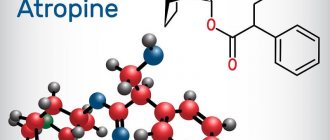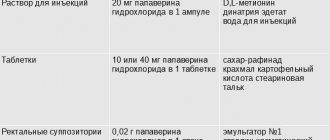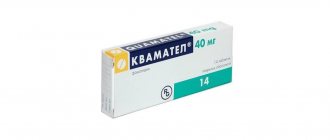Isofra is an antimicrobial (antibacterial), but not vasoconstrictor, drug for topical use in ENT practice. The composition includes the antibiotic framycetin, which belongs to the group of aminoglycosides and has a bactericidal effect. Has activity against gram-positive and gram-negative microorganisms and various strains of bacteria. Isofra inhibits the synthesis of proteins that are necessary for the life of the bacterial cell. Pseudomonas aeruginosa, chlamydia, streptococci, and enterococci show resistance to framycetin.
Pharmacokinetics have not been studied, since Isofra has a low level of absorption by the body.
The drug is a prescription drug and is therefore dispensed from the pharmacy only with a doctor's prescription.
Contraindications
- Susceptibility to the active substance;
- Children under 1 year;
- Pregnancy;
- Breastfeeding period;
- It is forbidden to use Isofra for rinsing the nose.
- Long-term use is not recommended.
You can buy the drug in the 911 pharmacy chain or on the official website apteka911.ua at the most affordable price. On the website you can arrange delivery to a post office convenient for you, thus protecting your health from contact with sick people.
Dosages for Isofra therapy, methods of administration
The instructions recommend adhering to the following standards:
- for adults – from 4 to 6 procedures per day, one injection into each nasal passage;
- babies over 12 months - three times a day, one spray in each nostril.
The duration of therapeutic manipulations does not exceed 1 week. The duration of therapy is prescribed by the attending physician taking into account the indicators of laboratory diagnostic examination, tolerability of Isofra and the results achieved.
The spray is more convenient to use than classic nasal drops. The solution is evenly distributed over the mucous membranes and does not flow down the back wall of the nasopharynx. The volume of administered medication is precisely dosed.
During clinical studies, no cases of drug overdose were recorded. Tests have proven that the active components of the drug can reduce the effectiveness of topical medications aimed at combating fungal infections. No other interactions with medications have been recorded.
Isofra, how to inject?
The bottle with the drug should be held vertically, the head should be slightly tilted forward and sprayed.
Isofra, how often can I use it?
For adults, the drug should be used 4 to 6 times a day, for children over 1 year old - no more than 3 times a day. Isofra should not be used frequently, as resistance to the drug may occur in some strains of microorganisms.
Isofra from what?
Isofra is used for infectious and inflammatory processes of the nasal cavity: rhinitis, sinusitis, sinusitis, nasopharyngitis, and for the prevention of complications after operations.
What is better Isofra or Polydex for adults?
Polydexa is an analogue of Isofra. Both drugs are produced by the same pharmaceutical company, the drugs are indicated for similar diseases, are well tolerated and have a minimum of adverse reactions, both drugs are contraindicated during pregnancy and breastfeeding. The main difference is the composition and principle of action. Isofra is a monocomponent drug and is used only for bacterial infections. Polydexa is a complex remedy that not only has an antibacterial effect, but also decongestant and fights inflammatory diseases.
Indications, adverse reactions, contraindications for Isofra therapy
The instructions indicate that the nasal spray is prescribed for complex therapy:
- sinusitis;
- pharyngitis, sinusitis of bacterial etiology;
- rhinopharyngitis.
Isofra is recommended to prevent the development of infections and inflammations of the ENT organs after surgery. The use of the spray is allowed for patients over 12 months of age.
The drug is contraindicated in children under one year of age and is not used in cases of individual intolerance to the component composition. The drug is not contraindicated in nursing and pregnant women, but treatment should be carried out with the approval of a doctor if the potential risk to the fetus does not outweigh the practical benefit to the mother's body.
During therapeutic manipulations, some patients experienced adverse reactions to Isofra. During therapy the following may occur:
- allergic reactions;
- toxicerma - an acute inflammatory process of the skin that forms in response to allergens that have entered the body;
- Quincke's edema and anaphylaxis.
The appearance of signs of allergies or other non-standard reactions requires consultation with your doctor. The specialist will change the treatment regimen and select suitable analogues. In case of adverse reactions, taking the medication should be stopped immediately.
Note!
The description of the drug Isofra on this page is a simplified author’s version of the apteka911 website, created on the basis of the instructions for use.
Before purchasing or using the drug, you should consult your doctor and read the manufacturer's original instructions (attached to each package of the drug). Information about the drug is provided for informational purposes only and should not be used as a guide to self-medication. Only a doctor can decide to prescribe the drug, as well as determine the dose and methods of its use.
Features of the composition and release form
The active component of the colorless solution of Isofra is framycetin sulfate. Additional drops ingredients are:
- sodium chloride;
- sodium salt and citric acid monohydrate;
- purified water;
- preservative E218.
The medicine is available in 15 ml bottles made of opaque white polyethylene. Each package contains instructions for use and a bottle of medication.
Antiseptic solutions
An antiseptic is a substance that, upon direct contact with the skin or mucous membranes, causes the death of infectious agents. Therefore, the use of nasal drops with an antiseptic is a therapeutic measure, not a symptomatic one. An antiseptic is prescribed both for self-use in patients with purulent nasal discharge, and for rinsing the nasal cavity and paranasal sinuses during medical procedures.
The most famous antiseptics:
- Protargol and collargol. These are the oldest but still used antiseptic drugs. They contain silver ions and, in addition to their bactericidal effect, also have an astringent and anti-inflammatory effect. They are prescribed mainly to children, as they have fewer contraindications compared to other antibacterial agents.
- Dioxidine.
- Miramistin.
- Octenisept.
Reviews about the use of the drug Isofra
Isofra spray appeared on our pharmacological market a long time ago and managed to gain popularity.
Doctors very often prescribe this medicine to both children and adults, as it easily copes with respiratory tract infections and leads to rapid recovery. Has good reviews.
When used correctly and in combination with other medications and physiotherapy, the therapeutic effect is achieved in three to five days.
Below are reviews on the use of the drug:
MaMa Inna
Hello! My teenage son started having a runny nose about two months ago. At first the discharge was light and he sneezed slightly. My son refused to spray anything in his nose, even aquamaris, they say, will go away on its own, it’s because of cat hair that got into my nose. It turned out not! It was the beginning of a runny nose.
Onorina
Hi all! I learned about Isofra drops after my child got sick for the first time. My daughter was six months old and had a normal ARVI. But I was very scared then, it was my first time.
Panther 11
Absolutely every parent experiences a runny nose in children. What do pediatricians now prescribe? Sea water? A lingering runny nose will not help, but if the runny nose is not treated, sinusitis is guaranteed! In the garden, all children have snot and wheezing. I personally know two children who have snot ALL THE TIME. They sometimes leak, sometimes the nose is stuffy, but it seems that they are not being treated. I have already written about my experience in treating my son’s runny nose and wheezing. Until he was 3 years old, I managed to never fill him with antibiotics, although the snot was different. Everything is described in detail.
Well, then - the standard picture: the son went to kindergarten, and it began... He brought some kind of virus that killed not only the child, but also three adults. After treatment, everything was fine, but the runny nose did not go away. The snot was greenish in color. We went to an appointment with an ENT specialist like we went to work - every other day. She didn’t see anything bad, but the runny nose stubbornly did not go away. Washing with “cuckoo”, herbs, sea water was a miss, but meanwhile the runny nose lasted for 2 weeks, if not more. ENT prescribed Isofra spray
Special instructions and analogues of Isofra
The manufacturer focuses on the following nuances:
- violation of the rules of use from the instructions attached to the drug, uncontrolled use can cause bacterial resistance to the active components of the solution;
- before starting therapy, the patient must attend a consultation with a local doctor;
- after completion of treatment procedures, the bottle of medicine is disposed of - the problem is associated with a high risk of contamination of the packaging by bacteria.
The medicine is sold by prescription and should be stored in a dark place at temperatures up to 25 degrees. The spray should be kept away from small children and pets. Isofra retains its properties for 1.5 years; after opening the bottle it must be used within one calendar month.
The appearance of adverse reactions and signs of allergy requires a revision of the treatment regimen, replacing the drug with a suitable analogue. A list of common substitutes is presented:
- Aqua Marisom Strong;
- Aqua Marisome;
- AquaMaster;
- Delufen;
- Marimer;
- Morenasalom;
- Otrivin Baby;
- Pinosol;
- Salin;
- Sinuforte;
- Physiometer;
- Cinnabsin;
- Evamenol;
- Eucaseptum;
- Euphorbium Compositum Nazentropfen S.
The drug does not have a 100% analogue with the same active ingredient. Therapy can be carried out with drugs containing aminoglycosides: Amikacin, Bramitob, Garamycin, Dilaterol, Streptomycin and others.
The cost of substitutes is sometimes lower than the price of the original medicine. Pharmacies offer Isofra from 170 rubles per 15 ml bottle.
General information about the disease
In order to effectively deal with nasal congestion in a child, it is necessary, first of all, to know for what reasons this unpleasant symptom appears. The reasons may be different. From infectious diseases to negative environmental impacts.
The main causes of nasal congestion in children are:
- Colds viral diseases, flu. More often they appear in the cold seasons. Especially in late autumn and early spring. When there is a constant fluctuation in temperature and it is difficult for the baby’s developing body to adapt to such quirks of nature. ARVI provokes a runny nose, which leads to nasal congestion.
- Allergies are also considered to be one of the main reasons why this symptom may occur. During allergic reactions, the mucous membranes of the nose become swollen and inflamed. The child coughs, sneezes and a considerable amount of mucus is released from the nose, which becomes the cause of nasal congestion.
- Adenoids often interfere with the baby's normal nasal breathing. With the advent of infectious diseases, they often become inflamed and block the nasal passage, which prevents the child from breathing normally.
Other causes of long-term nasal congestion may include:
- Deviation of the nasal septum. Congenital pathology or the result of an injury.
- Growth of polyps in the nasopharynx of a child. As they increase, the nasal passages become blocked, and breathing through the nose becomes difficult.
Patient reviews
According to buyers, the product acts quickly in the early stages of a bacterial disease and suppresses the activity of pathogenic microflora in a few days. With sinusitis, the clinical manifestations of the disease disappear within 72 hours, but if no changes occur, then the therapeutic procedures are stopped, and a more suitable analogue is selected.
In childhood, the appointment is prescribed by the attending physician. Attempts at self-medication without determining the source of the disease do not bring the expected results and may cause pathogen resistance to the active ingredients of the solution. The medicine works well in the treatment of rhinitis, sinusitis, and adenoids.
Rules of application
You can read a lot of positive reviews about the spray, which is produced on the basis of framycetin, but parents who treated viral rhinitis in a small child were dissatisfied with the drug, since the antibiotic only fights bacteria. Despite the local effect of Isofra, the drug must be prescribed by a doctor who will recommend the optimal number of manipulations in each case.
Do not remove the dispenser and use the spray in the form of drops. Before starting the procedure, the sinuses must be cleared of snot. To do this, they are washed with the pharmaceutical agent Aqualor, Furacilin, or a saline solution is prepared. To get rid of swelling, which often accompanies inflammation in the maxillary sinuses, you need to use drops that will narrow the dilated blood vessels.
If after a week a person does not feel any changes, you need to go to the doctor to prescribe another remedy.
Antiallergic (antihistamine)
They have a quick and good antiallergic effect. They relieve local manifestations of allergies: reduce the amount of liquid transparent discharge, reduce redness and itching of the nose, neutralize sneezing attacks, swelling and congestion. They should be used against allergic rhinitis or hay fever.
The use of antihistamines for colds or infectious sinusitis does not bring a positive effect; on the contrary, they excessively dry out the mucous membrane, causing the opposite effect.
Titles:
- Allergodil;
- Azelastine;
- Levocabastine;
- Sanorin-analergin, contains a vasoconstrictor - Naphazolin;
- Vibrocil, containing a vasoconstrictor – Phenylephrine;
and:
- Rinatek (Ipratropium), anticholinergic drops, are used to treat runny nose and congestion in bronchial asthma. It begins to act only after 5 minutes;
- Cromolyn (Antirinol, Ifiral), mast cell stabilizers, block the initiation of an allergic reaction. For prevention, they are prescribed before encountering an allergen; for treatment, they are dripped simultaneously with antihistamines.
Vasoconstrictor drugs: helping to quickly pierce the nose
Vasoconstrictors, or decongestants, are the most extensive group of medications used for congestion.
This is due to their ability to relieve swelling of the mucous membrane, which instantly leads to easier breathing.
Medicines of the latest generations begin to act almost immediately after administration, older medicines – after 5–10 minutes.
Thus, these are inexpensive emergency treatments for any type of rhinitis that do not produce any therapeutic effect.
Nasal vasoconstrictor drugs are available in the form of drops and sprays. But they can only be used for 5–7 days in strict accordance with the instructions, since exceeding the dose or taking it for a longer period of time provokes dependence, which can lead to the development of chronic vasomotor rhinitis.
Their list is quite extensive, but they are all made from the same active ingredients. This:
- naphazoline (Nafazol-Hemofarm, Sanorin, Betadrin, Naphthyzin, Polinadim);
- xylometazoline (Pharmazolin, Tizin Xylo, Influrin, Galazolin, Grippostad Rino, DlyaNos, Xinos, Rinorus, Otrivin, Doctor Theiss Rinotaiss, Eucabal, Xylene, Evkazolin Aqua);
- oxymetazoline (Vicks Active Sinex, Nazivin, Sialor Rhino, Noxprey, Athene, Nazol, Sanorinchik).
It is advisable to use vasoconstrictor nasal drops for congestion only when:
- extremely severe swelling that prevents you from getting a good rest at night;
- the need to speak in public or other similar situations in which nasal language is inappropriate.
What types of nasal drops are there?
Nasal drops are a dosage form. These include drugs and paramedicines with different mechanisms of action. Nasal drops are used for rhinitis (infectious, vasomotor, allergic), rhinosinusitis, otitis, adenoiditis, to prevent ARVI and increase immunity, moisturizing the nasal mucosa. All drops and sprays used intranasally (directly into the nose) can be divided into the following groups:
- Vasoconstrictor drops.
- Saline solutions.
- Antiseptics.
- Nasal drops with antibiotics.
- Immunostimulants.
- Antiallergic drops and sprays.
- Herbal medicines.
- Complex drops.
- Homeopathic drops.
Ideally, any treatment, even a common runny nose, should be prescribed by a doctor. But in reality this is not always feasible. You can start using some drugs on your own, but not more than 3-5 days.
Nasal drops and sprays for congestion
Quite effective means for treating nasal congestion are drops and sprays. Of course, they have their advantages and disadvantages.
Advantages
The advantages of drops and sprays into the nose for congestion are that their effect occurs locally on the foci of inflammation, and they are almost not absorbed into the blood. Almost all nasal preparations for children contain substances that stimulate the vessels of the nasal mucosa. They quickly relieve inflammation and swelling. Promotes less mucus secretion. There is also another significant advantage of nasal drops and nasal spray. Preparations of this form can be used with other antiviral and antibacterial drugs during the period of illness.
Nasal sprays are a fairly new form of medicine. But compared to drops, sprays have their advantages. Namely:
- When using a spray, the medicine reaches almost the entire nasal mucosa. This means that the healing effect will be higher than, for example, when using drops;
- When sprayed, the spray reaches the farthest areas of the mucous membrane;
- When applying drops, you need to take a lying position or throw your head back strongly. The spray can be sprayed into the nose while sitting or standing. Choose any comfortable position;
- Children are often capricious and do not want to have nose drops put in their nose. With sprays, the situation is different. Children's attitude towards them is more favorable;
- Dosages. It is not always possible to measure drops accurately when instilling them. As a rule, a larger quantity always comes out. One press is enough to spray the spray. This allows you, albeit slightly, to still save money.
Flaws
The disadvantages of nasal drops and sprays include the fact that they do not treat the disease itself, which causes nasal congestion, but only facilitate its course. With prolonged use of such drugs, addiction occurs, and then you have to increase the dose. Because the mucous membrane reacts less and less to the medicine. There is another negative factor. Long-term use of these medications can cause a “habitual runny nose,” which often occurs when the medication is stopped.
In what cases should you take antibiotic drops?
Drops with antibacterial agents are used for complications of ARVI. In cases where green snot appears as a result of hypothermia. This type of mucus contains a huge number of bacteria. These can be streptococci, staphylococci and others.










